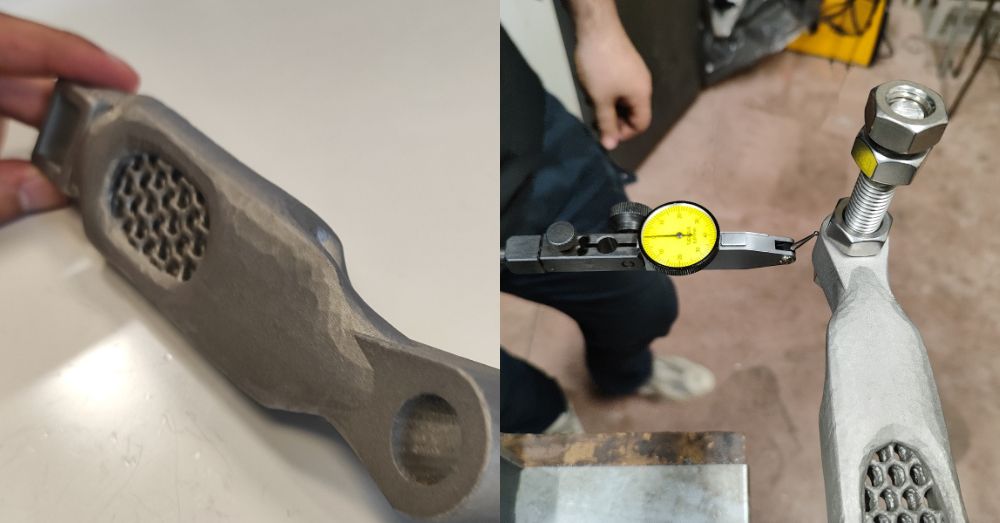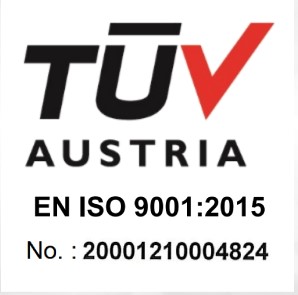Combining Additive Manufacturing and Topology Optimization
At ANiMA, we have the honor of participating in interesting and innovative projects that incorporate advanced Additive Manufacturing (AM) technologies, making us part of the evolution of modern mechanical engineering. Recently, we had the opportunity to collaborate with a talented postgraduate student from the National Technical University of Athens (NTUA), who expressed his preference for manufacturing using Selective Laser Melting (SLM) technology.
This project involves the development of a mechanical component for a bicycle, aiming to reduce weight and optimize performance. In this article, we will share our experience from the beginning of the design to the final implementation, as well as the student's thoughts and conclusions on the use of AM in the construction of this innovative component.
Dionysis Tsimourtos, ANiMA: Tell us a bit about yourself, such as what you study, what you like most about it, and where you feel you will focus in the future.
Sofoklis Kanavoutsos: I recently completed my postgraduate studies in the interdisciplinary program "Automation Systems" at NTUA, choosing the direction of construction systems and production. As an automation engineer, I liked the additional knowledge I acquired in the field of mechanical engineering. As an engineer, I focus on new technologies mainly in the industrial sector and in construction.
Dionysis Tsimourtos, ANiMA: What is the part you constructed and its function?
Sofoklis Kanavoutsos: As part of my dissertation and under the guidance of Dr. St. Polydoras, I chose a pilot application to lighten a mechanical component, with a hybrid design that combines the method of topology optimization and lattice structures. A component that is well-known to the general public was selected, a bicycle pedal arm.
Dionysis Tsimourtos, ANiMA: Why did you choose Additive Manufacturing for the construction of this specific part?
Sofoklis Kanavoutsos: The complex three-dimensional geometric result that emerges from the aforementioned hybrid design makes using additive manufacturing technology necessary. With the use of CNC machine tools, it would not be possible for the cutting tools to reach all the points required for material removal.
Dionysis Tsimourtos, ANiMA: Was this the first time you constructed something with the help of AM?
Sofoklis Kanavoutsos: This is not the first time I have dealt with additive manufacturing technologies; I own a 3D printer with FDM technology where I design and manufacture mainly components from older cars.
Dionysis Tsimourtos, ANiMA: How did you find the overall process, from design, and construction to the final stage of seeing the piece in your hands?
Sofoklis Kanavoutsos: The process of hybrid design was quite complex. Especially for someone who has not used a method of lightening a component in the past, the application of hybrid design, and more specifically finite element analysis, exclusively in Autodesk software, was something that required special engagement to achieve the desired result.
Through this experience, I now realize how useful the method of hybrid design can be. Although the processes of topology optimization, lattice structures, and finite element analysis seem complex, the result opens new perspectives and offers great flexibility in the construction of components with special requirements, with a wide range of applications in the mechanical and industrial sectors.
Dionysis Tsimourtos, ANiMA: After studying and integrating the piece into your overall construction, what are the findings? Did it serve its purpose?
Sofoklis Kanavoutsos: The arm was tested in a machine shop environment, based on the requirements of the application. The results were excellent as the arm withstood significantly greater forces than those a cyclist can exert under the most adverse conditions, and we had negligible displacement at the points indicated by the finite element analysis of the design.
Finally, I would like to note the importance of understanding additive manufacturing technologies to the general public. Shortly, many objects useful even in our daily lives will not be commercially viable to trade directly. It will be a more accessible and economical solution to trade the manufacturer's three-dimensional design, to construct the objects in a 3D printer.










